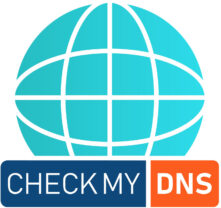In the digital world, Domain Name System (DNS) lookups are a vital translation of domain names to IP addresses so that one can access websites without needing to remember numeric addresses. Sometimes, though, it’s equally important to find out which domain name is mapped to a specific IP address, and this is where Reverse DNS (RDNS) lookup comes in. While a traditional DNS lookup is typically when a domain name resolves into an IP address, rDNS takes the opposite direction in reverse by starting with an IP address and returning the corresponding domain name. This article goes through what a Reverse DNS Lookup is, why it is useful, and how it enhances online security, email reputation, and network management.
What is Reverse DNS Lookup?
Upon receiving a reverse lookup request, it checks for the PTR record of the IP address and allows the system to identify the associated domain name. This process can, therefore be helpful in identifying the origins of traffic on the internet, verifying of authenticity of emails, and managing network security.
How Reverse DNS Lookup Works?
For reverse DNS lookups to occur, the owner of the domain must be able to create PTR records for the IP addresses. On receipt of an rDNS request:
- Step 1: Enter the IP address and check the appropriate PTR record related to that IP address during the reverse DNS lookup.
- Now the DNS server retrieves the domain name if there is already a PTR record.
- The result is returned back to whoever requested it; from this point, he will now be able to see his IP with a domain attached to it.
The general uses of reverse DNS lookup include email authentication and preventing spam.
- Email Authentication and Spam Prevention: Many email servers will use reverse DNS to authenticate the source of incoming messages. Messages whose IP addresses do not have corresponding PTR records can be flagged as suspicious and even malicious. An organization that sends a huge amount of emails should always implement reverse DNS with PTR records for all messages to be as likely as possible to get into the recipient’s inbox rather than being sent directly to the spam folder. Reverse DNS lookup is used to determine the sender’s reputation of an email. Email services, such as Gmail and Microsoft, check the PTR records of the incoming emails. The more a domain name matches that IP address, the more legitimate it appears, hence making the sender trustworthy.
- Network Diagnostics and Troubleshooting: rDNS is used by network administrators in diagnosing and troubleshooting a system, and determining the devices or servers a given IP address is transmitting to and from. Such an identification will monitor and manage the corporate network in terms of IP addresses as that is the point where security for a network is realized.For instance, if a packet of network traffic has identified that it is coming from an unknown IP address, the rDNS lookup would make known its domain. Then, the administrator will then understand what it is and assess any potential security risk.
- Improved Security and Defense Against DDoS Attack: In cybersecurity, rDNS lookups help verify legitimacy of IP addresses trying to access a network. The respective domain names can be evaluated to ascertain whether traffic coming from these sources is considered trusted or not. And when handling firewalls and IDS, rDNS lookup provides increased control over access lists preventing unauthorized access. rDNS lookups can be useful in DDoS attack analysis. The attackers’ IP addresses domain names are known during an attack which helps track the source of malicious traffic so the administrators could block or mitigate them more effectively.
- Analytics and Logging: Reverse DNS is highly used in analytics and logging services to identify the source of web traffic and further create context for user activities. Logs of IP addresses may not be easy to understand but correlate these IPs with the corresponding domains to better act.
- Web analytics services apply the use of rDNS for associating user IPs with names of domains so organizations will know where their traffic originates from and optimize their services within specific regions or organizations.
How to Do a Reverse DNS Lookup?
Reverse DNS lookups can be done using the several tools and commands available for most operating systems and through online services:
- Command Line: For Windows, open the command prompt and enter: nslookup <IP address>. For Unix/Linux, enter: dig -x.
- The online tool: include website such as CheckMyDNS which offer free rDNS lookup tools. Enter your IP address in the field provided, and the tool will return any PTR records associated with it.
Reverse DNS lookup plays a great role in authentication and revealing information about the IP addresses in the world of DNS. This gives a big impact on email authentication, network debugging, and security, thus giving organizations opportunities to make trust and guaranteed service.
rDNS provides additional transparency and security in source identification of traffic or confirmation of the origin of an email. With this consideration, anyone who has a server, manages an email system, or runs corporate networks should consider it as an indispensable feature. Improving communication and avoiding security hazards, Reverse DNS takes its rightful place in Internet infrastructure.
